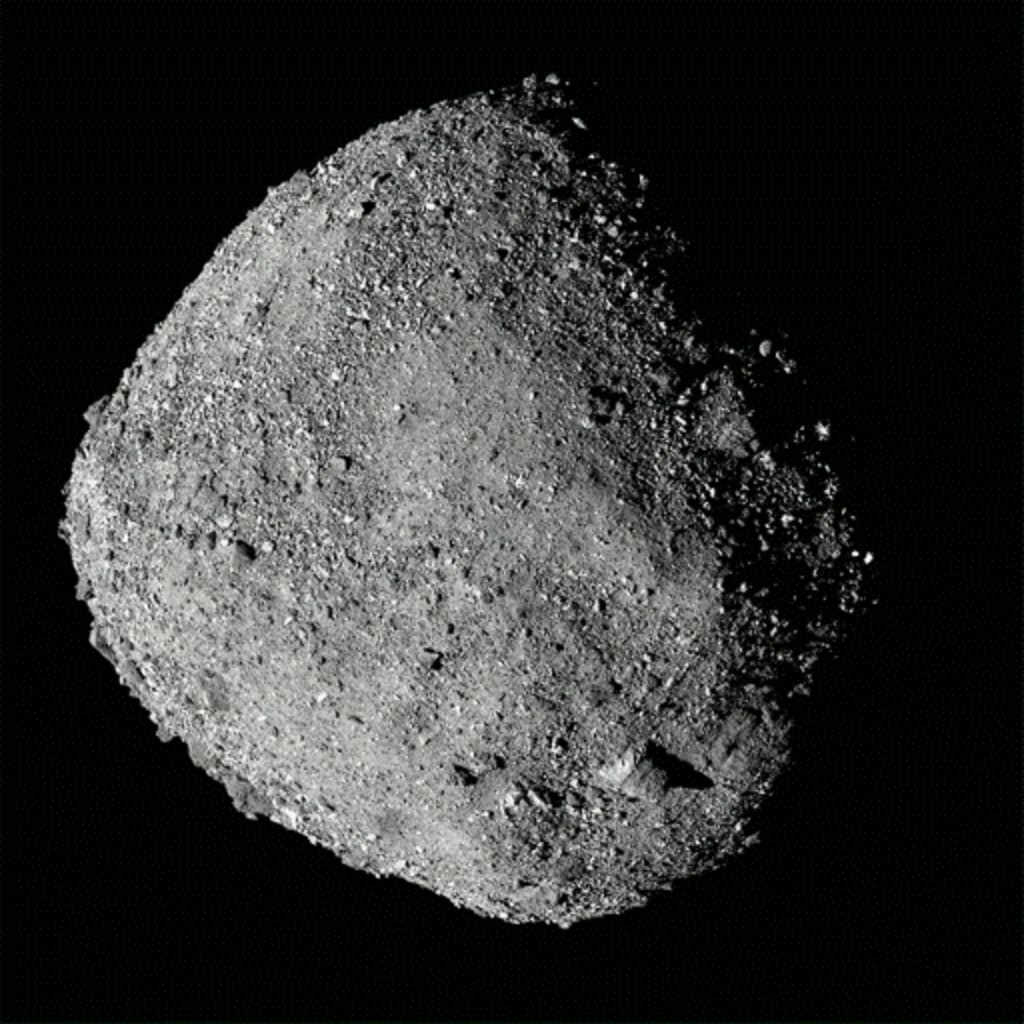Asteroid sample incoming: OSIRIS-REx team preps for September landing of Bennu bits
Recovery Teams Prepare for the Arrival of Extraterrestrial Samples

LITTLETON, Colorado — As NASA's first mission to collect a sample from an asteroid screams toward Earth, recovery teams are practicing the steps needed to ensure that the extraterrestrial material arrives safely on Earth for detailed scientific inspection.
The scene is here at the Lockheed Martin Space campus, a sprawling facility populated by major aerospace expertise at the ready for deep-diving exploration of the solar system.
On June 27 and June 28, extensive practice preparations were showcased here to help prepare for the arrival of the samples collected by NASA's OSIRIS-REx mission, which will occur in late September.
Preparing for a Pioneering Mission
OSIRIS-REx ("Origins Spectral Interpretation Resource Identification Security Regolith Explorer") launched in September 2016. It snuggled up to the near-Earth asteroid Bennu in October 2020, and then used hardware at the end of its robotic arm to snag a hefty sample of the space rock.
Lockheed Martin Space built OSIRIS-REx and provides flight operations for the craft, which won't be done after it releases its Earth-bound sample capsule. The probe will then head toward a second asteroid, the potentially hazardous Apophis, on an extended mission known as OSIRIS-APEX. If all goes according to plan, the spacecraft will slip into orbit around that rocky world in 2029.
The OSIRIS-REx return capsule is scheduled to land on Sept. 24, in a drop zone roughly 80 miles (130 kilometers) west of Salt Lake City within the U.S. military's Utah Test and Training Range.
A Delicate Dance of Precision and Coordination
At capsule touchdown, a recovery team will meet and greet the container, which looks like a miniature nose cone. In preparation for landing day, multiple simulations are being carried out to orchestrate the handling of the capsule and its precious cargo after it hits the Utah desert floor.
At the ready will be about a dozen people to do the on-site recovery of the capsule in Utah, said Richard Witherspoon, the lead for Lockheed Martin's OSIRIS-REx ground recovery operations. That specially trained group will arrive at the capsule's touchdown spot via helicopters.
"Our landing ellipse crosses both the Air Force and Army parts of the Utah Test and Training Range," Witherspoon said, "but our expected landing spot is on the Air Force side."
In total, upward of 40 individuals are to take part in the capsule recovery effort, including safety officials, sample curation team members, and a cleanroom staff. They are a first wave of specialists to prepare the retrieved capsule for another journey, which will send it via aircraft to NASA's Johnson Space Center in Houston. Once there, the bits and pieces of Bennu are to be securely housed, intensively studied, and shared with scientists from around the globe.
Unveiling the Secrets of Bennu
OSIRIS-REx's encounter with Bennu was full of surprises. The asteroid turned out to be a rubble pile made of diverse components, with bright and dark materials. It was an exciting discovery for Dante Lauretta, the principal investigator of OSIRIS-REx from the University of Arizona in Tucson.
"The OSIRIS-REx sample analysis program shines a light on astrobiology. For me, that's the key scientific driver of the program," Lauretta said. Indeed, Bennu is a leftover building block from our solar system's planet-formation period, and it could contain organic molecules similar to those that might have helped spur life here on Earth.
The site selection for collecting the sample was a challenging task. Anjani Polit, OSIRIS-REx mission implementation systems engineer from the University of Arizona, described the difficulties the team faced. "There were several main things we were looking for," she said. "First of all, it was maintaining the safety of the spacecraft. We had to find a space that was open enough that we could actually deliver the spacecraft to a spot where we could sample the asteroid."
A 19-Year Journey of Exploration
Beau Bierhaus, Lockheed Martin's OSIRIS-REx TAGSAM scientist, emphasized the challenges and excitement of the mission. The spacecraft and mission journey have already stretched over 19 years, from the concept proposal to the return capsule's landing two months from now.
OSIRIS-REx faced numerous unknowns, such as the cohesive properties of the asteroid's surface material due to the microgravity environment on Bennu. Despite these uncertainties, the spacecraft autonomously navigated, contacted, and backed away from the asteroid, culminating in the successful collection of the sample.
As the OSIRIS-REx team eagerly awaits the return of the sample capsule, they are driven by the desire to unlock the secrets of Bennu and pave the way for further exploration of our solar system.
"I'm all about getting samples into the laboratory—that's my goal," said Jason Dworkin, OSIRIS-REx project scientist at NASA's Goddard Space Flight Center in Maryland. The scientific community eagerly awaits the arrival of the extraterrestrial material, anticipating the wealth of knowledge it will provide about the formation and composition of our cosmic neighborhood.
Title: Unlocking the Secrets of Space: NASA's Mission to Earth from Asteroid Bennu
Subtitle: Recovery Teams Prepare for the Arrival of Extraterrestrial Samples
LITTLETON, Colorado — As NASA's first mission to collect a sample from an asteroid screams toward Earth, recovery teams are practicing the steps needed to ensure that the extraterrestrial material arrives safely on Earth for detailed scientific inspection.
The scene is here at the Lockheed Martin Space campus, a sprawling facility populated by major aerospace expertise at the ready for deep-diving exploration of the solar system.
On June 27 and June 28, extensive practice preparations were showcased here to help prepare for the arrival of the samples collected by NASA's OSIRIS-REx mission, which will occur in late September.
Preparing for a Pioneering Mission
OSIRIS-REx ("Origins Spectral Interpretation Resource Identification Security Regolith Explorer") launched in September 2016. It snuggled up to the near-Earth asteroid Bennu in October 2020, and then used hardware at the end of its robotic arm to snag a hefty sample of the space rock.
Lockheed Martin Space built OSIRIS-REx and provides flight operations for the craft, which won't be done after it releases its Earth-bound sample capsule. The probe will then head toward a second asteroid, the potentially hazardous Apophis, on an extended mission known as OSIRIS-APEX. If all goes according to plan, the spacecraft will slip into orbit around that rocky world in 2029.
The OSIRIS-REx return capsule is scheduled to land on Sept. 24, in a drop zone roughly 80 miles (130 kilometers) west of Salt Lake City within the U.S. military's Utah Test and Training Range.
A Delicate Dance of Precision and Coordination
At capsule touchdown, a recovery team will meet and greet the container, which looks like a miniature nose cone. In preparation for landing day, multiple simulations are being carried out to orchestrate the handling of the capsule and its precious cargo after it hits the Utah desert floor.
At the ready will be about a dozen people to do the on-site recovery of the capsule in Utah, said Richard Witherspoon, the lead for Lockheed Martin's OSIRIS-REx ground recovery operations. That specially trained group will arrive at the capsule's touchdown spot via helicopters.
"Our landing ellipse crosses both the Air Force and Army parts of the Utah Test and Training Range," Witherspoon said, "but our expected landing spot is on the Air Force side."
In total, upward of 40 individuals are to take part in the capsule recovery effort, including safety officials, sample curation team members, and a cleanroom staff. They are a first wave of specialists to prepare the retrieved capsule for another journey, which will send it via aircraft to NASA's Johnson Space Center in Houston. Once there, the bits and pieces of Bennu are to be securely housed, intensively studied, and shared with scientists from around the globe.
Unveiling the Secrets of Bennu
OSIRIS-REx's encounter with Bennu was full of surprises. The asteroid turned out to be a rubble pile made of diverse components, with bright and dark materials. It was an exciting discovery for Dante Lauretta, the principal investigator of OSIRIS-REx from the University of Arizona in Tucson.
"The OSIRIS-REx sample analysis program shines a light on astrobiology. For me, that's the key scientific driver of the program," Lauretta said. Indeed, Bennu is a leftover building block from our solar system's planet-formation period, and it could contain organic molecules similar to those that might have helped spur life here on Earth.
The site selection for collecting the sample was a challenging task. Anjani Polit, OSIRIS-REx mission implementation systems engineer from the University of Arizona, described the difficulties the team faced. "There were several main things we were looking for," she said. "First of all, it was maintaining the safety of the spacecraft. We had to find a space that was open enough that we could actually deliver the spacecraft to a spot where we could sample the asteroid."
A 19-Year Journey of Exploration
Beau Bierhaus, Lockheed Martin's OSIRIS-REx TAGSAM scientist, emphasized the challenges and excitement of the mission. The spacecraft and mission journey have already stretched over 19 years, from the concept proposal to the return capsule's landing two months from now.
OSIRIS-REx faced numerous unknowns, such as the cohesive properties of the asteroid's surface material due to the microgravity environment on Bennu. Despite these uncertainties, the spacecraft autonomously navigated, contacted, and backed away from the asteroid, culminating in the successful collection of the sample.
As the OSIRIS-REx team eagerly awaits the return of the sample capsule, they are driven by the desire to unlock the secrets of Bennu and pave the way for further exploration of our solar system.
"I'm all about getting samples into the laboratory—that's my goal," said Jason Dworkin, OSIRIS-REx project scientist at NASA's Goddard Space Flight Center in Maryland. The scientific community eagerly awaits the arrival of the extraterrestrial material, anticipating the wealth of knowledge it will provide about the formation and composition of our cosmic neighborhood.
About the Creator
Enjoyed the story? Support the Creator.
Subscribe for free to receive all their stories in your feed. You could also pledge your support or give them a one-off tip, letting them know you appreciate their work.





Comments
There are no comments for this story
Be the first to respond and start the conversation.